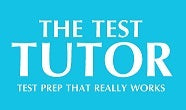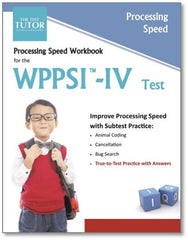Processing speed is a measure of cognitive efficiency or cognitive proficiency. It involves the ability to automatically and fluently perform relatively easy or over-learned cognitive tasks, especially when high mental efficiency is required. Students who have slow processing speed struggle with challenges at school and at home. Unless teachers and parents make efforts to help these students by modifying instruction, allowing more time to complete work, and providing games and activities to improve the child's processing speed, then the child may end up with grades that do not reflect his or her true ability. This post will explain what processing speed is in a clinical and practical sense, give examples of how it impacts the student in the classroom and suggest some games and activities to stimulate the brain and increase processing speed.
What is processing speed?
In a clinical sense, John Hopkins refers to processing speed as the “speed of completion of a task with reasonable accuracy.” Another definition that sheds light on the issue is “the ability to rapidly and efficiently respond to basic stimuli (Rucklidge & Tannock, 2002)." Let’s look at this definition in a practical sense; tasks, that for a typical student are done without much thought, become strenuous for the child with slow processing speed. For example, for an older child speaking, writing, reading, and doing simple addition becomes automatic; it does not require focused mental attention once learned. But for a child with slow processing speed, any one of these areas (or more) may pose a problem; the learned information is not automatic; the child must rely on a strategy to figure it out or stop and “think” how to perform it. Obviously, some of these tasks need to become automatic in the middle and upper grades. When students must stop to think about how to respond to “basic stimuli,” their work will take considerably longer to accomplish. Consider the challenges a child faces attempting to write a short description about a book he/she read, while at the same time expending concentrated effort on remembering how to form each letter.
Another area that children struggle with due to the slow processing speed is math and numbers. A typical 5th grader, when doing a multi-step problem, sees 7+5 and instantly knows it is 12 and moves to the next step; a child with slow processing speed takes time to first recognize the numbers for what they equal individually, then think about the fact that this is addition and not multiplication, then possibly use a strategy to get to 12. It may take several seconds compared to the average 5th grader who can do it in 1 second.
To summarize, processing speed involves how quickly stimuli or data is received to the brain (through the senses), the information is understood or analyzed, and feedback or output is given as a result.
Signs of slow processing speed in the classroom
From the Elementary Teachers’ Federation, we gain these insights to signs of slow processing speed in the classroom. Students take longer to:
- Complete tests that involve “simple decision making.”
- Perform math calculations.
- Comprehend material read to themselves.
- Write paragraphs, summaries, or perform dictation exercises.
- “Recognize simple visual patterns.”
Other signals of slow processing speed include:
- Student does not complete tests or homework in time given.
- Student cannot take notes while the teacher is speaking (too much information at one time to process).
- Student struggles with multi-steps problems, tasks, or directions.
- Student appears confused or overwhelmed when too much stimuli is present.
Games and Activities to Boost Processing Speed
By boosting your child’s memory, you will automatically be increasing the processing speed. Here are some games and activities to stimulate the brain and aid in memory retention.
Logic Puzzles: Crossword puzzles and sudoku are helpful also because the more the student manipulates letters and numbers in a fun, non-threatening way the faster they will become at using them.
Boggle: The goal of this game is to unscramble the letters to create as many words as possible in a short time.
Keyboard using a fun-themed computer program: There are children’s keyboarding programs that are both interesting and educational. When your child learns to keyboard, the brain is involved in receiving data, internalizing it, and then performing output.
Jigsaw puzzles: The brain processes the visual picture and must recreate it; add the challenge of cut out pieces to work with, and your child will surely sharpen his/her brain power.
Learn an instrument: Learning an instrument is personally rewarding and involves eye and hand coordination, as well as memorization. The brain is exercised by going between reading the notes, recalling what the hand position is (in the case of piano), and then the process of actually striking the note.
Simon Says: You can play the electronic version of this game or play it with other individuals. The goal is for the child to follow the directions of “Simon” who gives a command. In the electronic game, the child must follow a sequence of lights and sounds and play it back exactly. This strengthens memory.
Online Brain Games: There are many online games to increase memory, processing speed, and working memory. Here is a link to a site called Brain Curls. It has an entire page of brain-boosting games that are sure to be a lot of fun and they are all free too.
Processing speed problems can hamper academic achievement if a plan for success is not put in place. Teachers and parents have an important role to play in helping the student who exhibits slow processing speed. With brain building games and activities, students can increase processing speed.
Related Products


